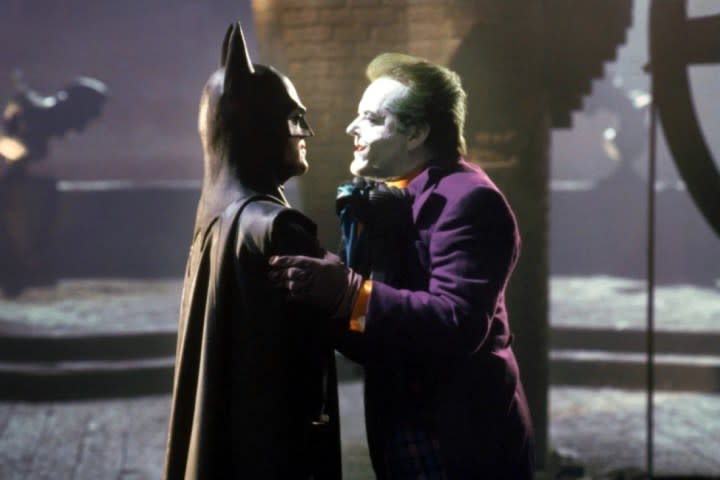35 years later, Tim Burton’s Batman still feels like a breath of fresh air

It’s hard to remember a time now when superhero movies weren’t a constant fixture of American life. The rise of Marvel Studios and cinematic universe-style storytelling has resulted in well over a decade’s worth of constant comic book movies and TV shows. Before game-changing filmmakers like Christopher Nolan and Sam Raimi brought their unique voices to the superhero genre in the mid-2000s, though, comic book movies weren’t nearly as frequent or omnipresent in Hollywood as they are now.
In 1989, for instance, they were still few and far between. Most of the superhero films that had been released before that year were, with a few exceptions, viewed as either cheesy, cheap, or disposable. None of them — not even Richard Donner’s Superman — were seen as an avenue for meaningful artistic cinematic expression. But that all began to change when Tim Burton‘s Batman hit theaters 35 years ago this week.
The film is, in a lot of ways, a fairly straightforward take on the story and character of Batman. However, while filmmaking technology has advanced considerably in the years since it was released and comic book movies have grown far more complex, Batman is arguably still just as astonishing to watch now as it was in 1989. There are a lot of reasons for that — most of which Hollywood as an industry and the studios behind today’s superhero movies seem to have forgotten.
A true original

Batman certainly isn’t the most narratively inventive or complicated film. Its decision to rewrite comic book canon by making the Joker (a villainous turn for the ages by Jack Nicholson) the killer of Bruce Wayne’s (Michael Keaton) parents is the kind of choice that would ignite endless criticism from fans online if it had been made today. There is, nonetheless, a beauty to the simplicity of its story, which follows Bruce as he fights the Joker not only for the future of Gotham City, but also the life of Vicki Vale (Kim Basinger). It’s a movie that embraces the archetypal nature of its characters and, in doing so, gives itself and its performers the space to go big and loud.
The outsized style of Batman‘s performances and story is matched by its visual design. Thirty-five years after its release, it still looks unlike any other comic book movie. Roger Pratt’s stark, colorful cinematography works in tandem with Anton Furst’s production design to create a live-action version of Gotham City that looks like it could have been both ripped right out of the pages of a comic book and served as the backdrop of a gothic silent film like Metropolis or The Cabinet of Dr. Caligari. There’s a beautifully tangible, purposefully artificial quality to Batman that calls to mind the German Expressionist film movement and yet still feels modern — for the late ’80s, at least.
It’s still one of Tim Burton’s best films

This is all to say that Batman doesn’t try to hide the craft that went into the making of it. The work of every artist involved is, in fact, on display in every one of its frames, as is the overarching vision of its director. Batman feels as much like a comic book movie as it does a Tim Burton film. When you watch it, you never get the sense that Burton had to curb his own artistic sensibilities. Instead, the director was allowed to make a Batman movie that was as dark, stylistic, acidic, and spooky as almost any other film he’s ever made.
Burton, consequently, ended up creating a superhero movie with an actual, identifiable identity — one that allows it to stand out in the genre even now.

Batman‘s ingeniously constructed shots, sets, and backgrounds combine together so stunningly that it really does make you feel like you’ve been dropped into a version of Gotham City that is both harsh and dreamlike. There are such clear, perceptible textures in every shot of the film that you get the sense that, if you reached out and touched it, you’d feel cold, rain-soaked steel or unbending concrete on the other side of the screen.
Today’s comic book movies pale in comparison to this Batman
Batman (1989) | Modern Trailer Recut | DC
It is, among other things, these qualities that truly separate Batman from most of the superhero movies that are made these days, nearly all of which rely on green-screen backgrounds and computer-generated effects that make them look fake and feel weightless.
You can’t say the same thing about Batman. The film’s sets are designed to stand out and be noticed and its actors are lit so that shadows can dance across their faces as they move and their expressions change. Thirty-five years later, it’s a shining example of what happens when a superhero movie is made to look and feel as real as possible. The executives running Marvel and DC right now could stand to take a few pages out of its playbook.
Batman (1989) is streaming now on Max.
